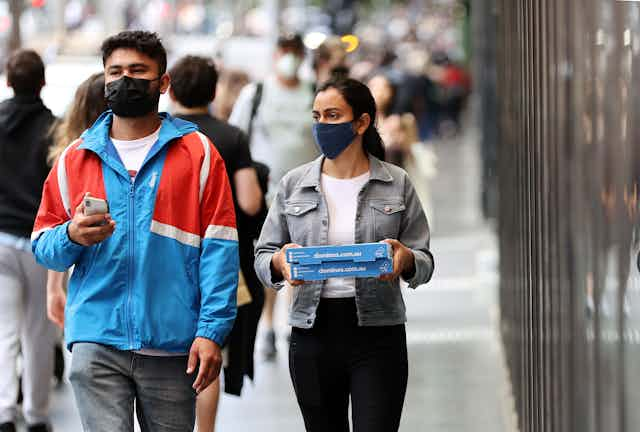Initial data from the 2021 census released this week shows Australia continues to become more culturally diverse.
Almost half of us have at least one parent born overseas (48.2%), and almost a quarter of us (24.8%) speak a language other than English at home.
Just over a quarter of us (27.6%) report being born overseas, and of those, India has risen to become the second-most common overseas country of birth after England.
The growing number of first-generation migrants means Australians’ ancestry will change significantly over the next decade. Australia will continue to change and look different, and we must ensure our institutions and policies reflect this.
That work, by governments and policymakers, should begin now so they can gain trust and maximise the belonging of these communities. Research shows feelings of belonging lead to better socioeconomic outcomes.
It’s likely there would have been substantially more immigration were it not for the COVID pandemic and subsequent restrictions and lockdowns. Some 84% of the one million new migrants arrived before the virus did.
Australia’s future
Three bits of data stuck out to me from this initial census data release:
India surpassed New Zealand and China in becoming the second-most common overseas country of birth
the number of people born in Nepal grew by 123.7% compared to 2016, the second largest increase in country of birth
the number of people who are either born overseas or have a parent born overseas is greater than half (51.5%).
These data show the changing face of Australia and our global links.
They also reveal suburban clusters in the major cities where ethnic groups have a critical mass, median incomes are higher than the state and national average, and tertiary education rates are on the rise (examples include Girraween and Castle Hill in NSW).
Such figures show social class is an important factor when looking at data on migrant populations. In areas with a higher percentage of working class migrants and resettled refugees, such as those mentioned towards the end of this article as more impacted by COVID, household incomes are lower and hence they require more consideration for future planning needs.
The top five sources of ancestry haven’t changed since the last census: English (33%), Australian (29.9%), Irish (9.5%), Scottish (8.6%) and Chinese (5.5%).
But given the big changes in country of birth data, Australians’ ancestry will look very different over the next decade.
This will have policy and planning implications across schooling, housing and local government services.
It will translate into the need for our diversity to be reflected in all aspects of society, including professions, media, decision-making roles and government.
These data also show Australia is as multicultural, if not more, than countries such as Canada, the United Kingdom and the United States.
Data from the 2016 census in Canada, which is known to be multicultural, shows 21.9% of people there are immigrants, with the largest share being from South Asia.
2018 data shows 14% of the UK population was from a minority ethnic background. In the city of London, this figure was 40% in 2018.
According to 2020 data, nearly four in ten Americans identify with an ethnic group other than white.
COVID disproportionately affected migrant communities
Australia would have received more migrants were it not for the COVID pandemic, which shut borders from early 2020.
We would have had more tourists, and more people arriving on work and student visas. Census data shows the pandemic led to an 80% decrease in the number of overseas visitors. This affected the economy, particularly in sectors such as tourism, hospitality and higher education.
We also received less relatives of overseas-born Australians, for example on family-sponsored visas. This can have impacts on childcare, care of elderly relatives and mental health.
Read more: The 2021 Australian census in 8 charts
Some areas with a high percentage of migrants were heavily affected by COVID and pandemic restrictions.
Census data reveals, for example, 71.6% of people in the Western Sydney suburb of Merrylands have both parents born overseas. And in the nearby local government area of Liverpool, 65.5% of people have both parents born overseas.
Western Sydney was an area disproportionately affected by COVID infections and deaths over the last two years. It was also subject to strict COVID restrictions and a heavy police and even military presence.
In Flemington, Melbourne, the site of a public housing tower lockdown in 2020, 47.1% of people have both parents born overseas. Somalia and Ethiopia feature in the top five countries of birth.
In Dandenong, south-east of Melbourne, 75.4% of people have both parents born overseas. The area has also suffered disproportionately more COVID deaths.
We don’t yet know the full extent of COVID impacts on these areas though. Further census data is due to be released in October featuring employment and work commute data for these areas which will be important to look at for COVID impacts.

